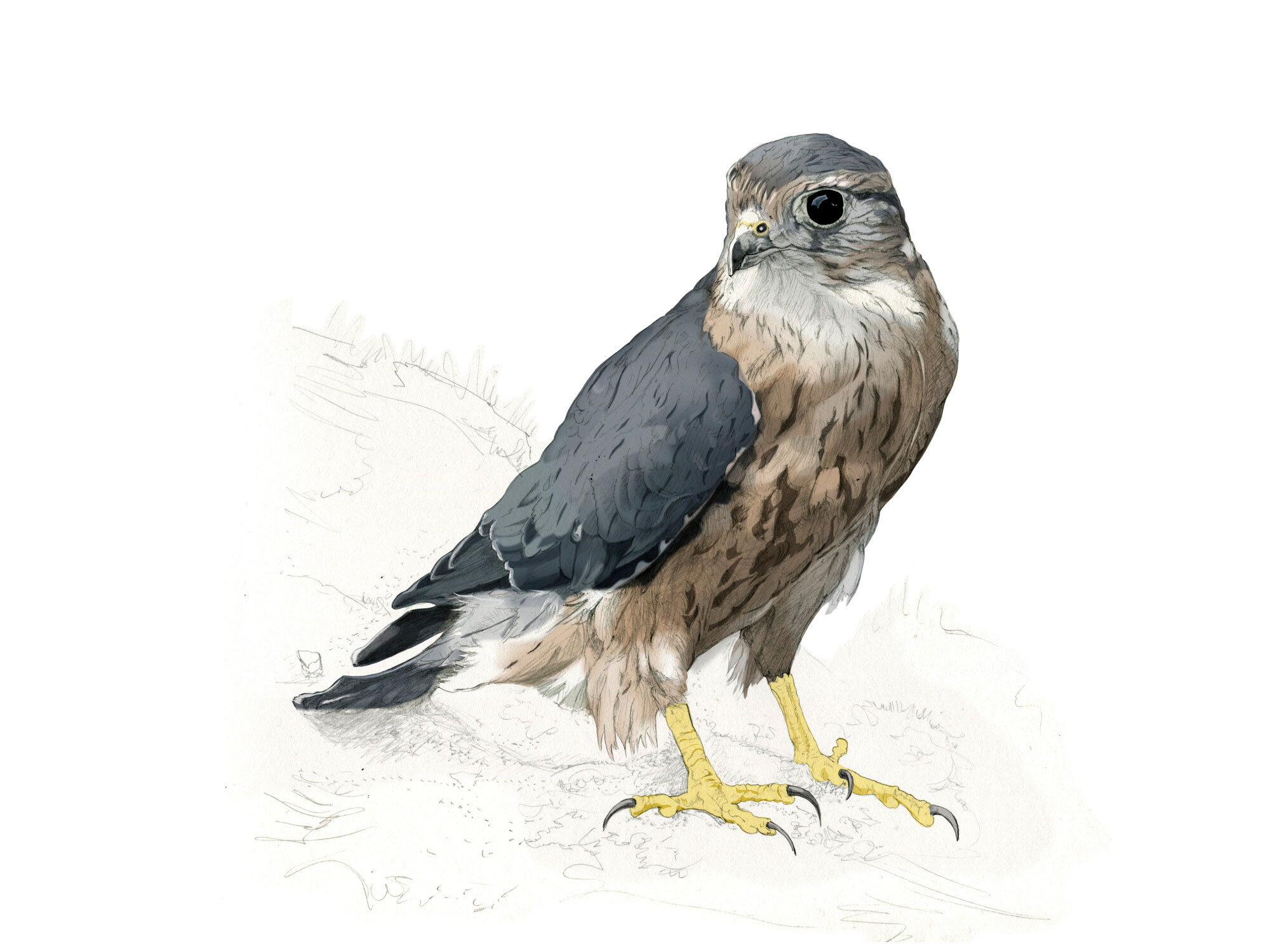
Falco columbarius
Merlin prefer open moorland for hunting. They nest on the ground amongst heather, or on small rocky crags, or in conifer plantations along the moor edge.
This small, fast-flying bird of prey is a type of falcon, and is the UK’s smallest raptor. The male has a greyish blue back and tail, creamy chest and its front is reddish brown with black streaks. The female has a brown back with stripes across the tail and could easily be mistaken for a kestrel when perching.
Merlin hunt over the moors, and nearby gill-side woods and farmland, feeding mostly on small birds such as pipits, larks and wheatears. They are expert flyers, often stooping and diving to catch their prey by surprise. Although a rare occurrence, they can even catch birds as big as themselves, such as snipe, dunlin, golden plover and lapwing. Females lay 3 to 5 eggs in late April or May, and sit on the nest most of the time to keep the eggs warm, although males sometimes take over during the night. The male brings food to the nest for the female and the chicks until the chicks leave the nest after about 28 days. In winter merlin often leave the moors and head for farmland or the coast where there are plenty of birds to hunt.
Merlin are a threatened species – there are only thought to be about 1,300 pairs of merlin in the UK and about 40 of these pairs live in the North York Moors. This area is therefore an internationally important habitat for merlin and, because of this, the North York Moors has become a Special Protection Area.
The National Park Authority works with farmers and landowners to look after the moorland in a way which benefits merlin and other birds.
Like all ground nesting birds on the moors, merlin are easily disturbed by people and dogs. You can help by keeping your dog on a lead and avoiding getting too close to nest sites.